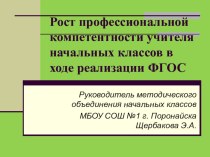- Главная
- Разное
- Бизнес и предпринимательство
- Образование
- Развлечения
- Государство
- Спорт
- Графика
- Культурология
- Еда и кулинария
- Лингвистика
- Религиоведение
- Черчение
- Физкультура
- ИЗО
- Психология
- Социология
- Английский язык
- Астрономия
- Алгебра
- Биология
- География
- Геометрия
- Детские презентации
- Информатика
- История
- Литература
- Маркетинг
- Математика
- Медицина
- Менеджмент
- Музыка
- МХК
- Немецкий язык
- ОБЖ
- Обществознание
- Окружающий мир
- Педагогика
- Русский язык
- Технология
- Физика
- Философия
- Химия
- Шаблоны, картинки для презентаций
- Экология
- Экономика
- Юриспруденция
Что такое findslide.org?
FindSlide.org - это сайт презентаций, докладов, шаблонов в формате PowerPoint.
Обратная связь
Email: Нажмите что бы посмотреть
Презентация на тему Insurance
Содержание
- 2. An insurance policy covers the insured party
- 3. Different types of insurance policies provide different
- 4. Policy term Policy terms commonly range from six
- 5. Policy limit Insurance policies also specify an amount
- 6. Deductible The deductible is the amount of
- 7. DeductibleUnder such an agreement, the insurance company
- 8. PremiumAn insurance company sets a policy’s premium
- 9. Actuaries, experts in determining insurance rates, compute
- 10. Consider, for example, the risks faced by
- 11. In this example, each car owner would
- 12. Although this example of computing premiums appears
- 13. Скачать презентацию
- 14. Похожие презентации
An insurance policy covers the insured party (known also as the insured or the policyholder) for a specified period of time, called a term. When choosing an insurance policy, a person must decide what type of
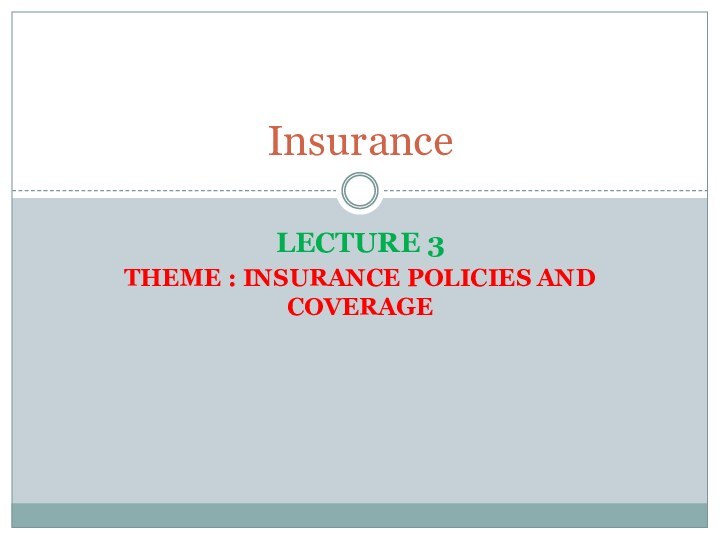

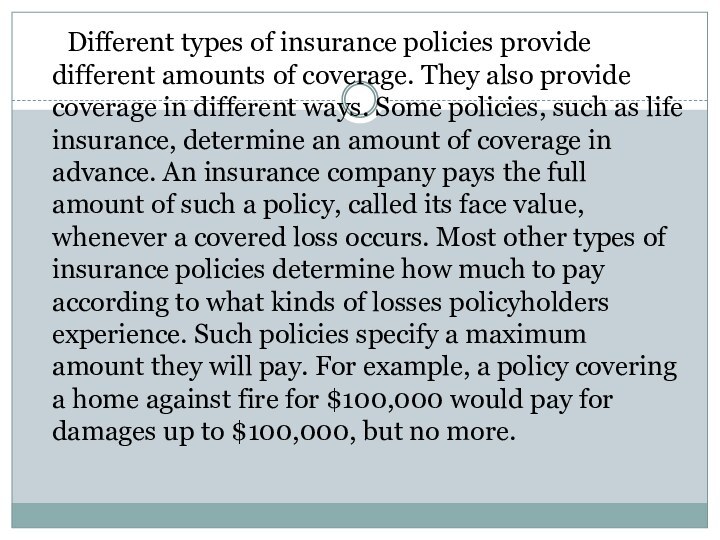
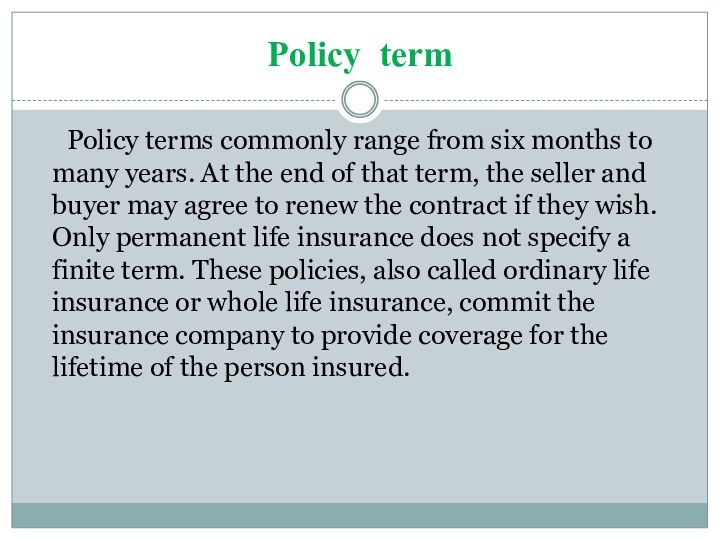
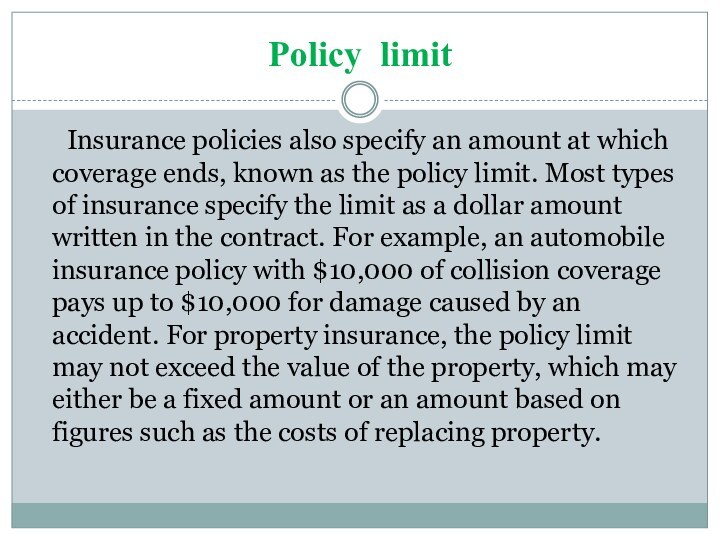
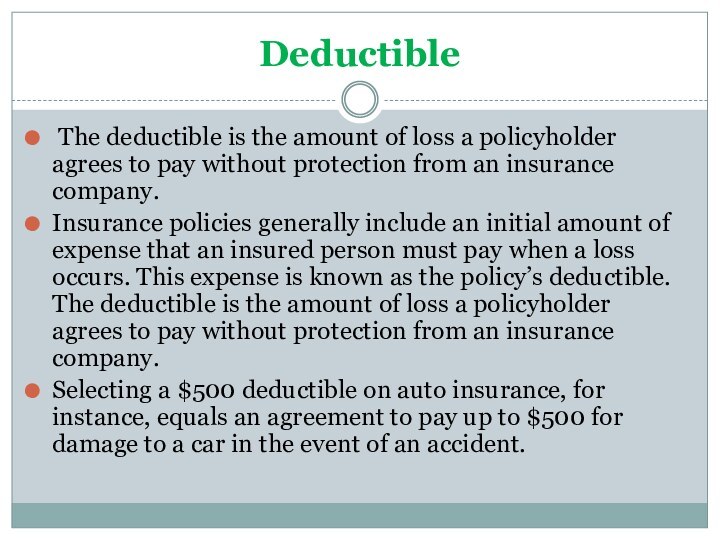
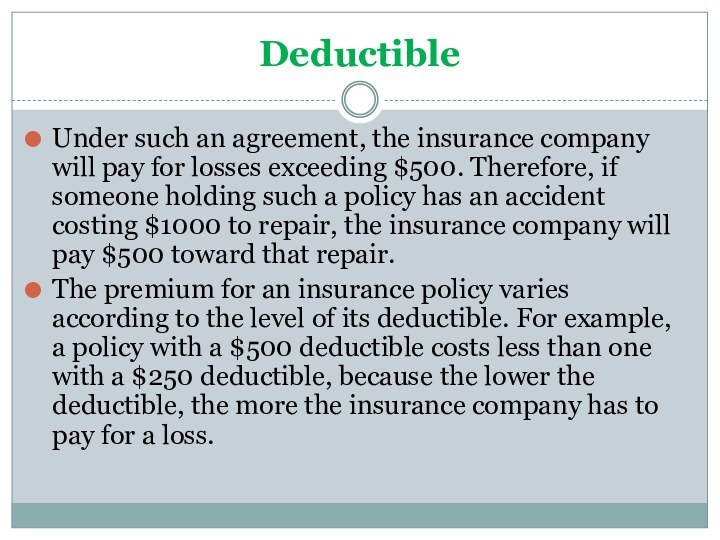
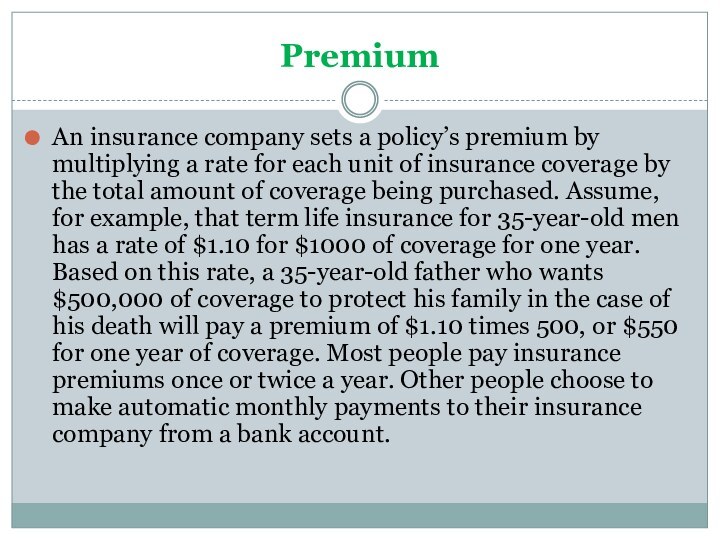

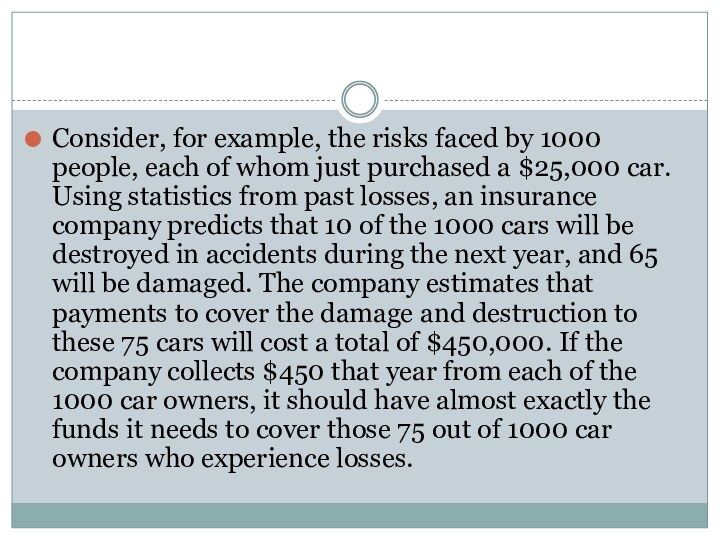
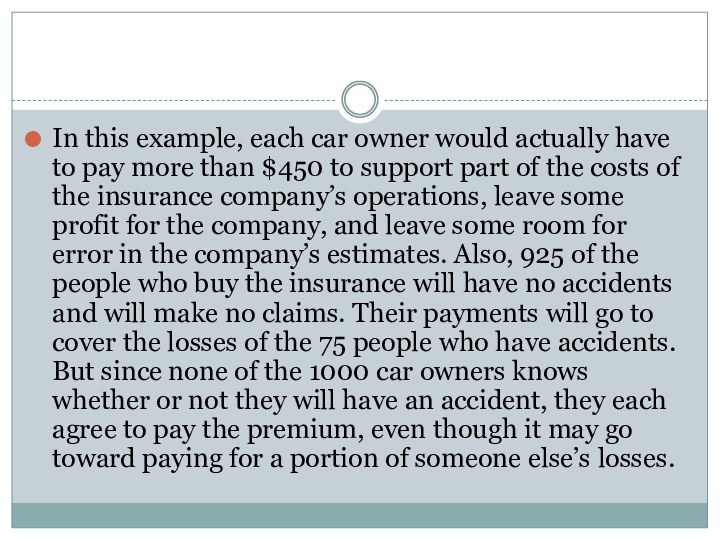
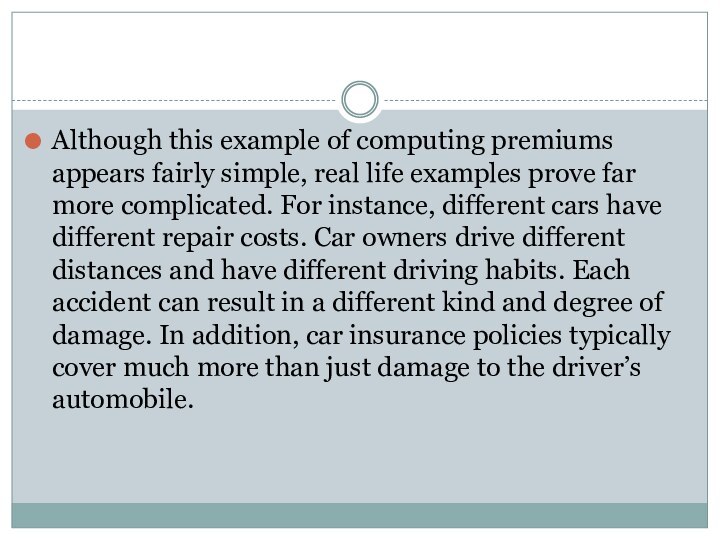
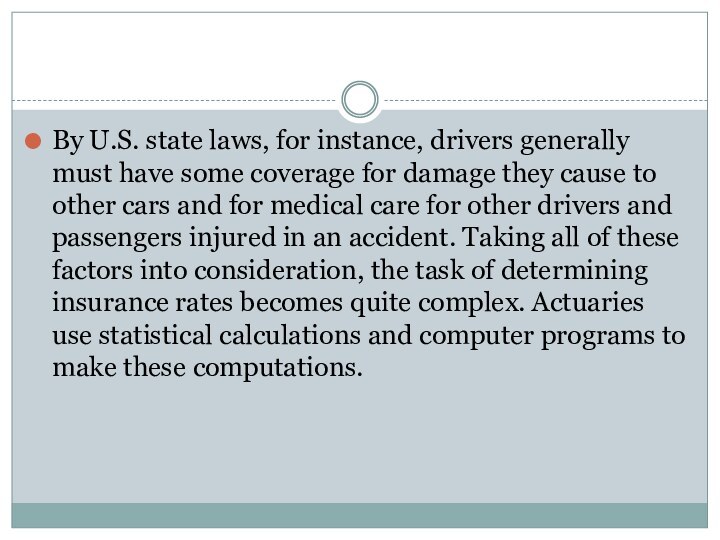
Слайд 3 Different types of insurance policies provide different amounts
of coverage. They also provide coverage in different ways.
Some policies, such as life insurance, determine an amount of coverage in advance. An insurance company pays the full amount of such a policy, called its face value, whenever a covered loss occurs. Most other types of insurance policies determine how much to pay according to what kinds of losses policyholders experience. Such policies specify a maximum amount they will pay. For example, a policy covering a home against fire for $100,000 would pay for damages up to $100,000, but no more.
Слайд 4
Policy term
Policy terms commonly range from six months
to many years. At the end of that term,
the seller and buyer may agree to renew the contract if they wish. Only permanent life insurance does not specify a finite term. These policies, also called ordinary life insurance or whole life insurance, commit the insurance company to provide coverage for the lifetime of the person insured.
Слайд 5
Policy limit
Insurance policies also specify an amount at
which coverage ends, known as the policy limit. Most
types of insurance specify the limit as a dollar amount written in the contract. For example, an automobile insurance policy with $10,000 of collision coverage pays up to $10,000 for damage caused by an accident. For property insurance, the policy limit may not exceed the value of the property, which may either be a fixed amount or an amount based on figures such as the costs of replacing property.
Слайд 6
Deductible
The deductible is the amount of loss
a policyholder agrees to pay without protection from an
insurance company.Insurance policies generally include an initial amount of expense that an insured person must pay when a loss occurs. This expense is known as the policy’s deductible. The deductible is the amount of loss a policyholder agrees to pay without protection from an insurance company.
Selecting a $500 deductible on auto insurance, for instance, equals an agreement to pay up to $500 for damage to a car in the event of an accident.
Слайд 7
Deductible
Under such an agreement, the insurance company will
pay for losses exceeding $500. Therefore, if someone holding
such a policy has an accident costing $1000 to repair, the insurance company will pay $500 toward that repair.The premium for an insurance policy varies according to the level of its deductible. For example, a policy with a $500 deductible costs less than one with a $250 deductible, because the lower the deductible, the more the insurance company has to pay for a loss.


